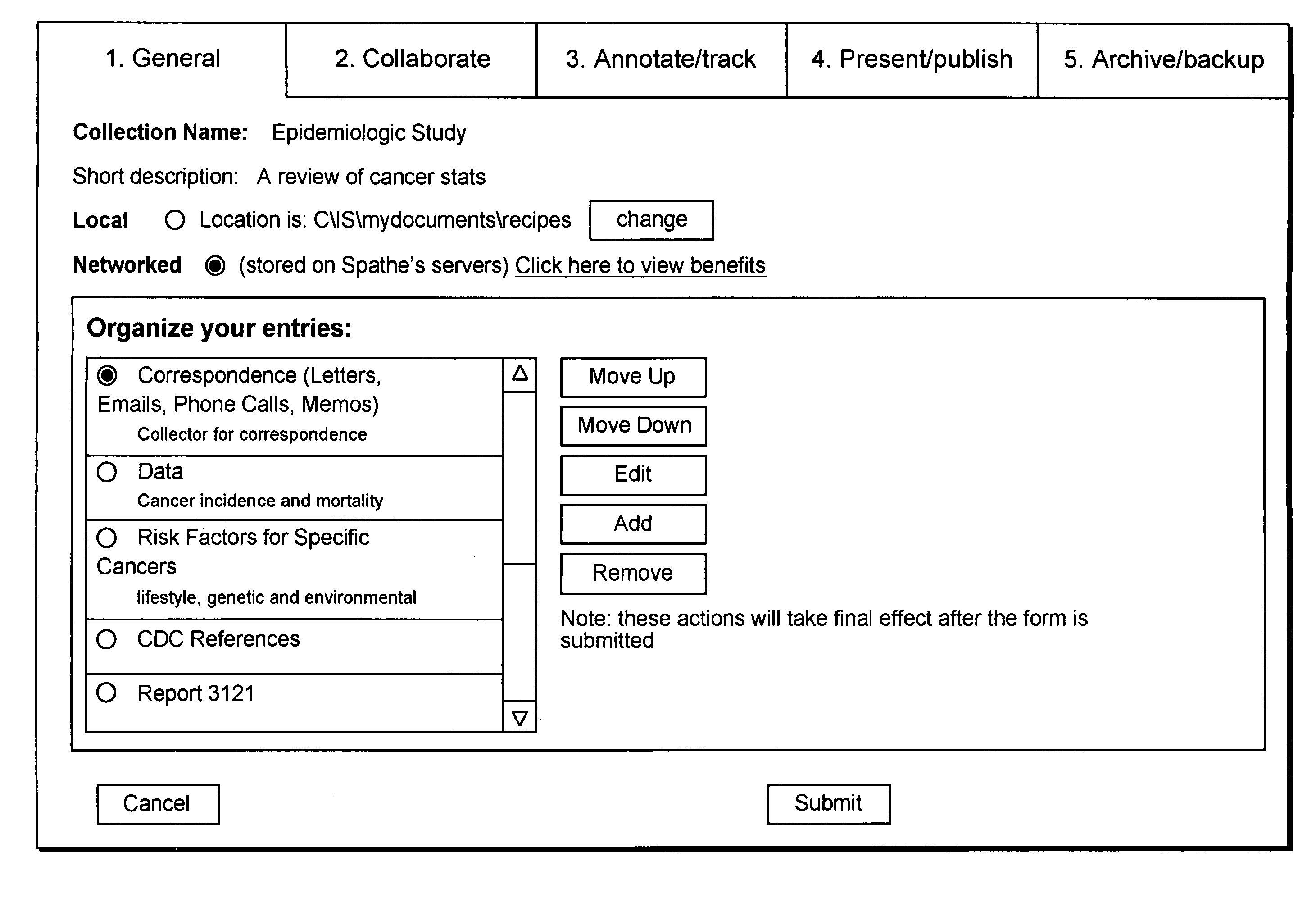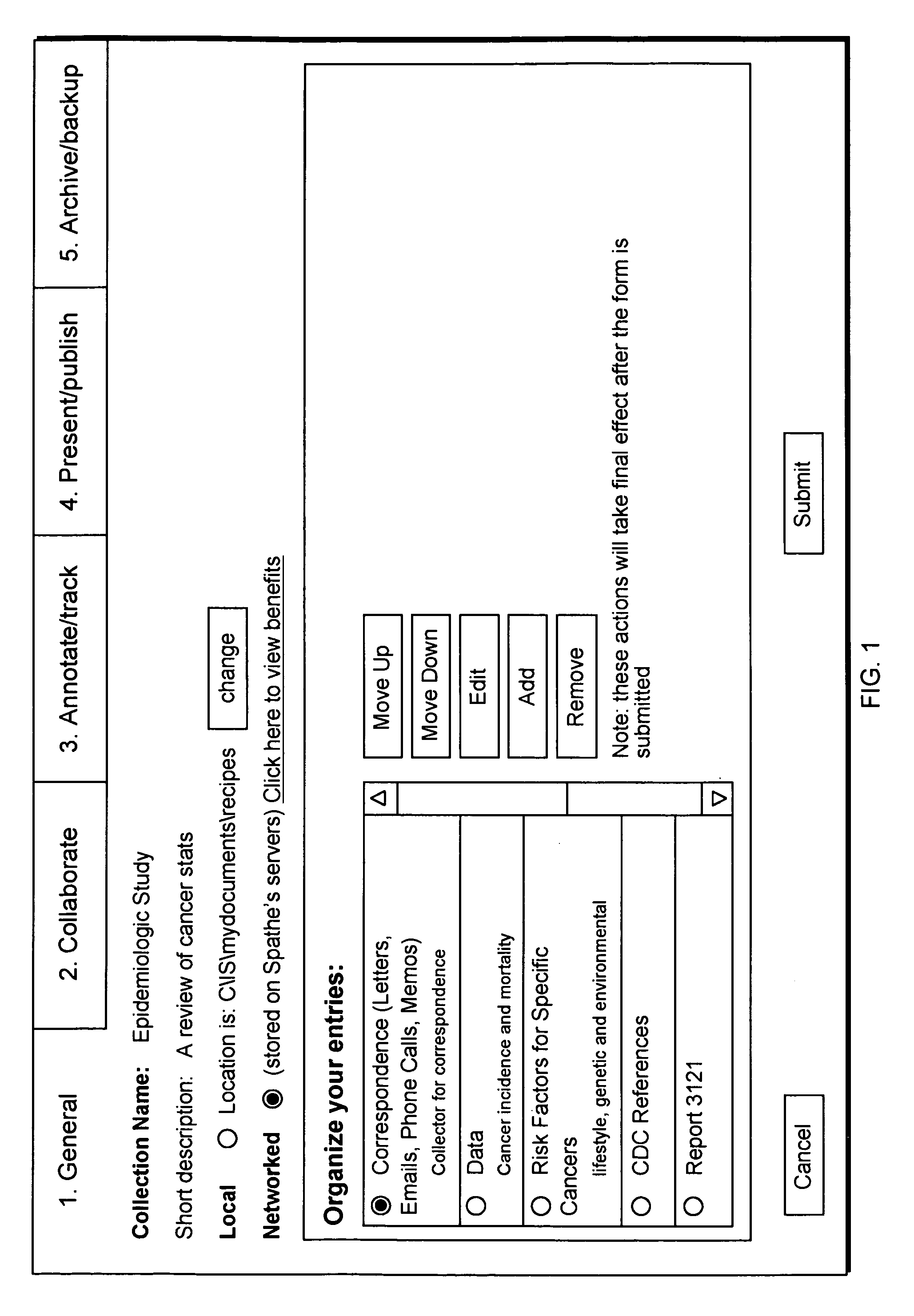Method or corresponding system employing templates for creating an organizational structure of knowledge
a knowledge organization and template technology, applied in the field of methods or corresponding systems employing templates for creating an organizational structure of knowledge, can solve the problems of time-consuming and laborious collection of knowledge sources, difficult to track and update new knowledge sources, and difficult to archive, manage and/or supplement knowledge source collection, etc., to achieve efficient knowledge access and knowledge access
- Summary
- Abstract
- Description
- Claims
- Application Information
AI Technical Summary
Benefits of technology
Problems solved by technology
Method used
Image
Examples
Embodiment Construction
[0027]A description of preferred embodiments of the invention follows.
[0028]A process according to an example embodiment of the present invention comprises identifying generic headings for collections and / or sub-collections based on a customary organizational structure for similar intentional activities, enabling a range of security, workflow and meta-data management options, and identifying storage and archiving choices.
[0029]For example the process may perform the following in any order including the omission of part of the process:[0030]1. Specifying organizational properties of the collection, such as at least a name of the collection;[0031]2. Identifying collaborative features, such as invitations to the collaborative process as well as roles and notification schemes;[0032]3. Identifying whether annotations, keywords and / or tags for collections and information contained in collections are to be used, how to present the same and how tracking, if any, is accomplished;[0033]4. Det...
PUM
 Login to View More
Login to View More Abstract
Description
Claims
Application Information
 Login to View More
Login to View More - R&D
- Intellectual Property
- Life Sciences
- Materials
- Tech Scout
- Unparalleled Data Quality
- Higher Quality Content
- 60% Fewer Hallucinations
Browse by: Latest US Patents, China's latest patents, Technical Efficacy Thesaurus, Application Domain, Technology Topic, Popular Technical Reports.
© 2025 PatSnap. All rights reserved.Legal|Privacy policy|Modern Slavery Act Transparency Statement|Sitemap|About US| Contact US: help@patsnap.com



